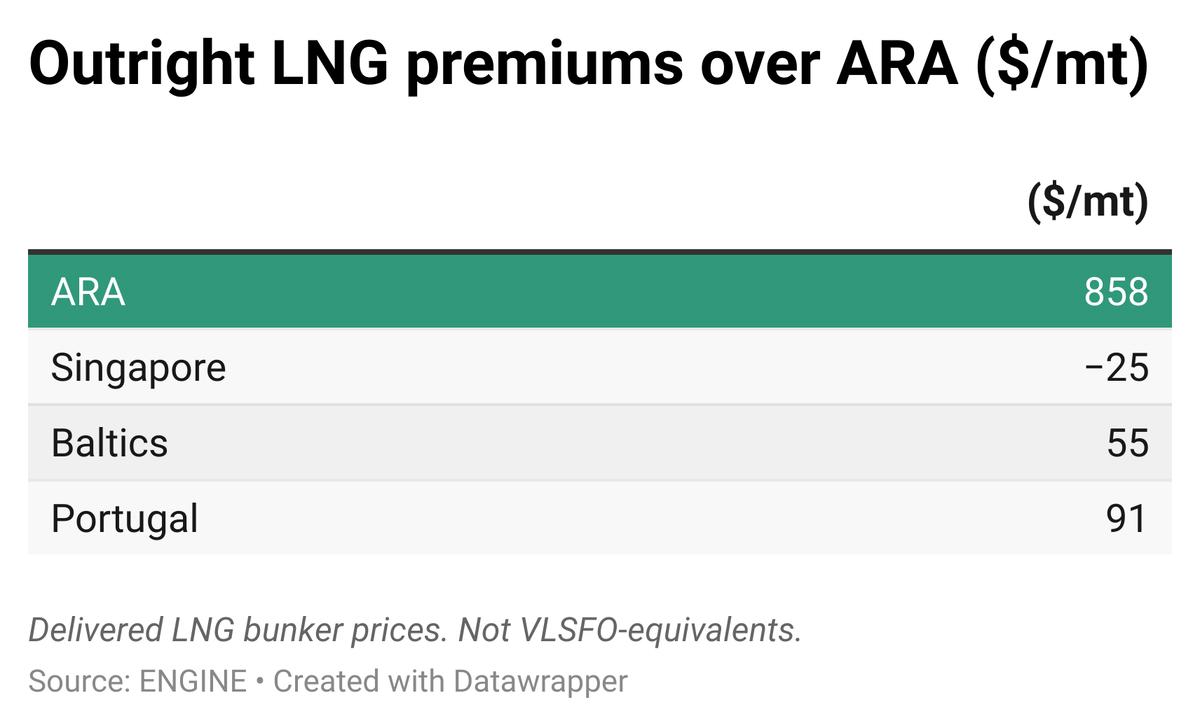LNG Bunker Snapshot: Singapore’s LNG discount to Rotterdam narrows
Rotterdam’s LNG bunker price has plunged amid warmer weather and flexible gas storage targets, while Singapore’s decline is driven by sluggish gas demand.

Changes in weekly LNG bunker prices:
- Rotterdam down by $73/mt to $858/mt
- Singapore down by $18/mt to $833/mt
Rotterdam
Rotterdam’s LNG bunker price has dropped sharply for a third consecutive week, despite LNG bunker premiums rising from $117/mt to $155/mt within the week. The decline was mainly driven by a 14% drop in the front-month Dutch TTF Natural Gas contract, a key European gas benchmark.
According to the Japan Organization for Metals and Energy Security (JOGMEC), the decline is due to “warm weather and discussions on the introduction of flexible gas storage targets.”
“The European Commission on 26 February opened the door for a much-anticipated revision of the 90% storage target for 1 November, acknowledging distortions linked to gas storage refilling… A possible departure from the 90% target, however, weighs on prices at the TTF,” Rystad Energy noted.
“The price falls are still primarily attributed to mild weather forecasts, which could mean that the heating season in Europe is coming to an end, whereas the potential peace agreement in Ukraine also adds to the sentiment,” Energi Danmark argued.
Singapore
Singapore’s LNG bunker price has fallen for a second consecutive week, reaching $833/mt. Asian LNG bunker prices generally follow the NYMEX Japan/Korea Marker (JKM), which declined by $0.33/MMBtu over the same period, bringing the front-month contract to $13.85/MMBtu ($720/mt).
Singapore’s LNG bunker price discount to Rotterdam has narrowed from $80/mt to $25/mt in just one week.
The decline has mainly been driven by “progress in peace negotiations over the war in Ukraine and sluggish demand in Asia,” according to JOGMEC.
“On the demand side, much of Asia faces a mild temperature outlook,” Rystad Energy added.
The Japan Meteorological Agency assigns a 50% probability for above-average temperatures until 7 March. Similarly, South Korea’s meteorological administration estimates a 50% probability for above-average temperatures between 10-23 March. In China, temperatures are also expected to be above long-term averages until 4 March.
“LNG deliveries (in China) in February slumped due to… mild weather and strong inventories,” commented Stephen Stapczynski, Energy Asia team leader at Bloomberg News.
By Tuhin Roy
Please get in touch with comments or additional info to news@engine.online





